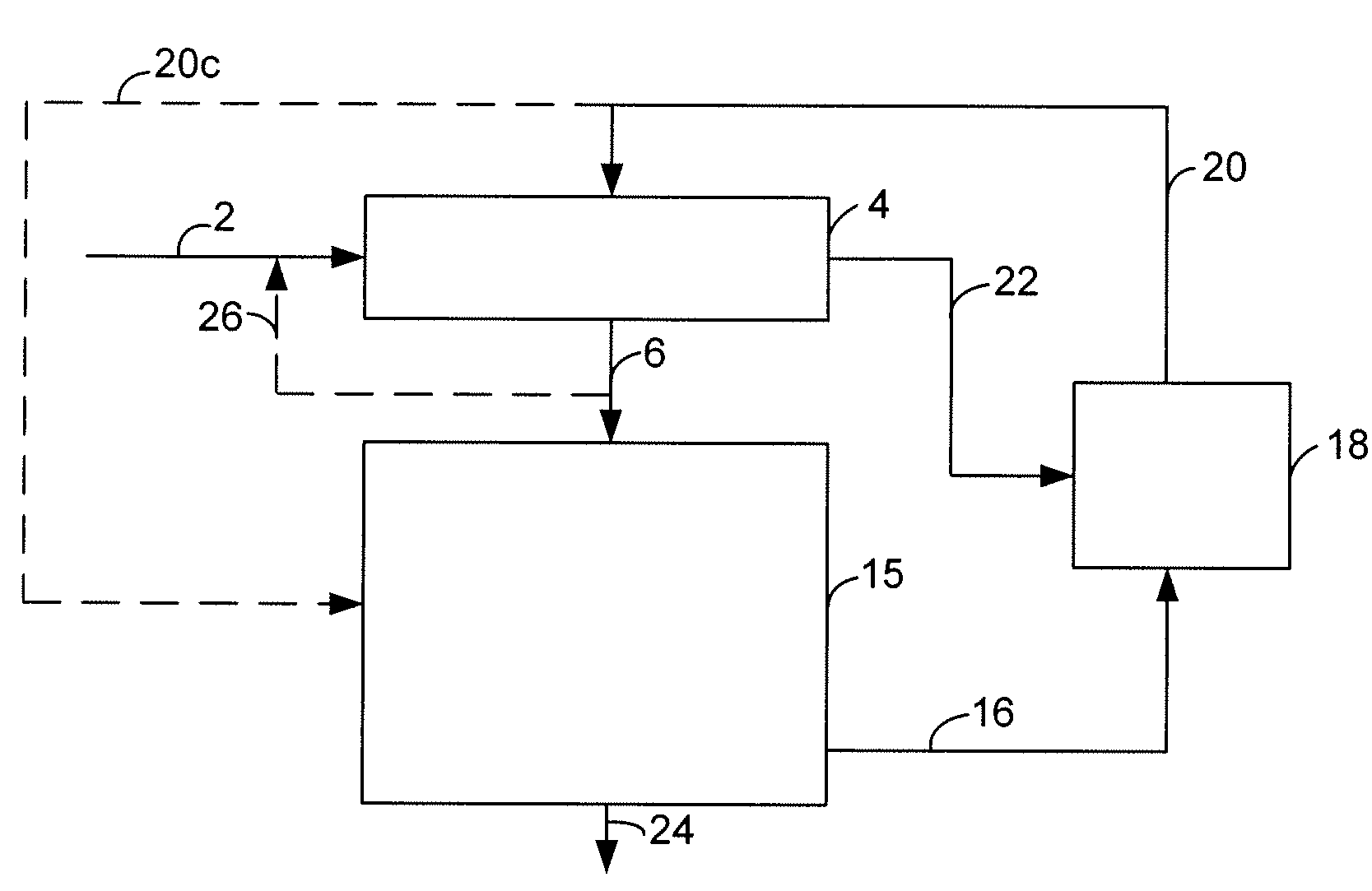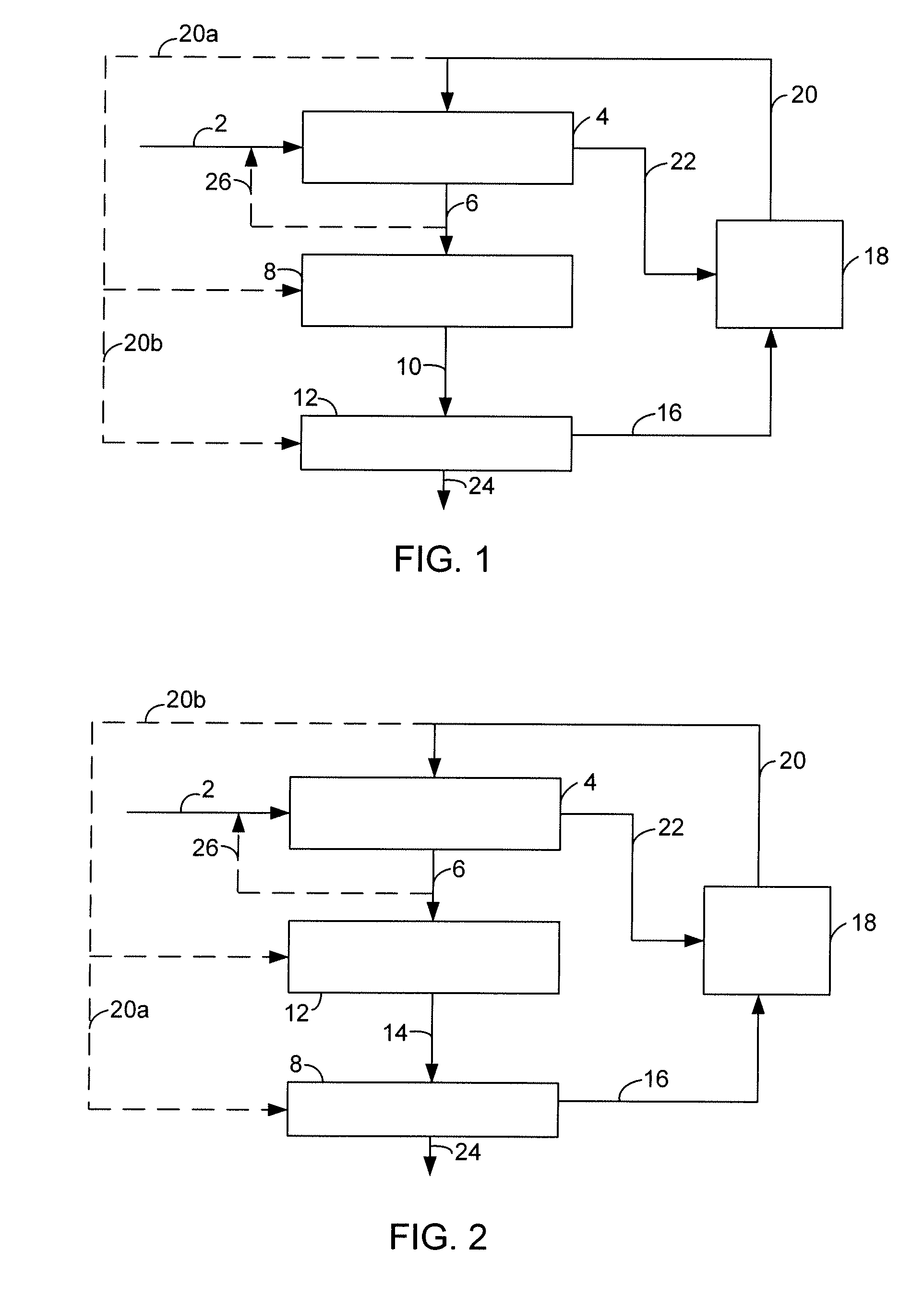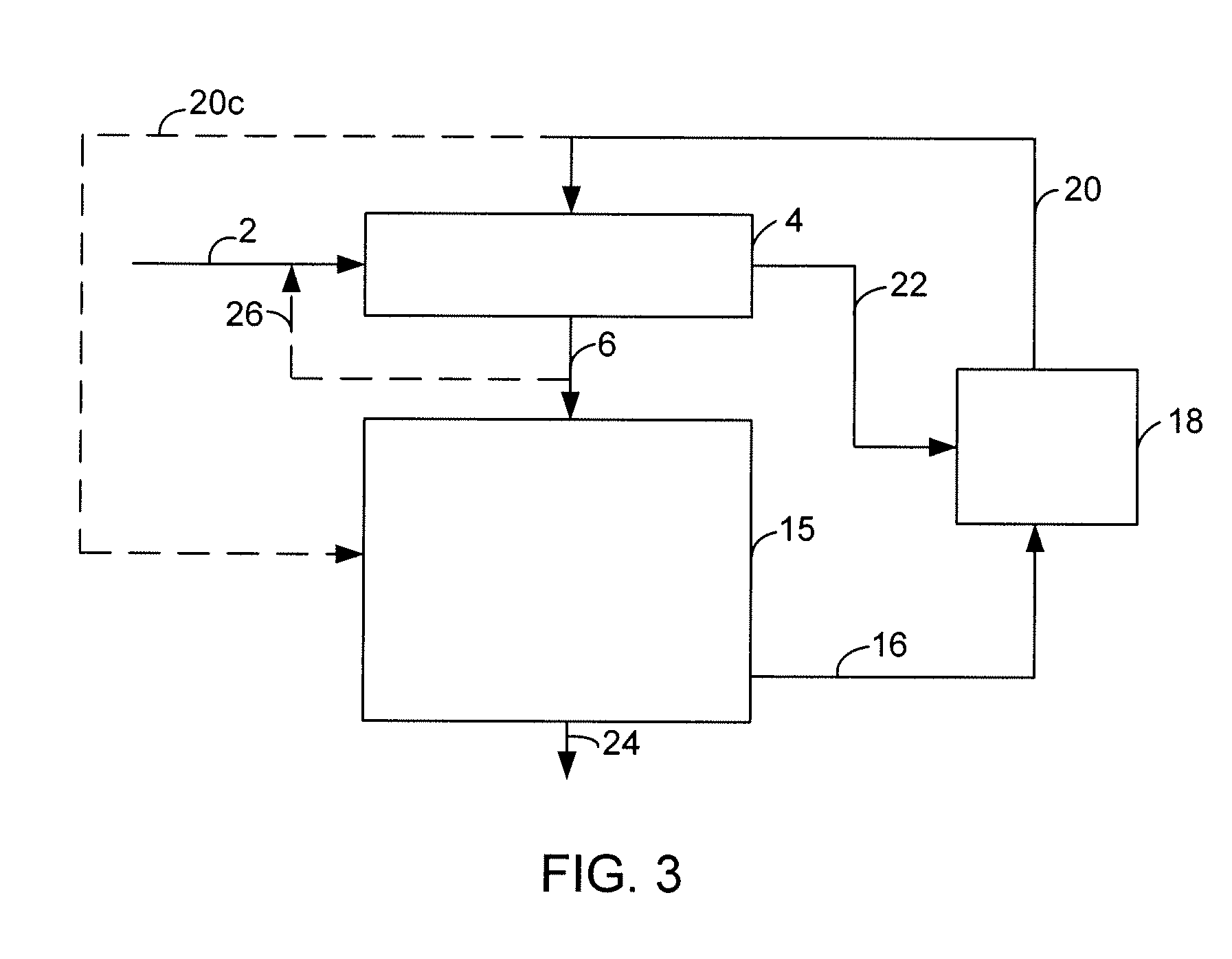Production of Aviation Fuel from Biorenewable Feedstocks
a biorenewable feedstock and aviation fuel technology, applied in the direction of fuels, thickeners, organic chemistry, etc., to achieve the effects of increasing the solubility of hydrogen in deoxygenation, improving cold-flow properties, and increasing selectivity
- Summary
- Abstract
- Description
- Claims
- Application Information
AI Technical Summary
Benefits of technology
Problems solved by technology
Method used
Image
Examples
example
[0047]Deoxygenation of refined-bleached-deodorized (RBD) soybean oil over the deoxygenation catalyst CAT-DO was accomplished by mixing the RBD soybean oil with a 2500 ppm S co-feed and flowing the mixture down over the catalyst in a tubular furnace at 330° C., 3447 kPa gauge (500 psig), LHSV of 1 h−1 and an H2 / feed ratio of 4000 scf / bbl. The soybean oil was completely deoxygenated and the double bonds hydrogenated to produce an n-paraffin mixture having predominantly from about 15 to about 18 carbon atoms; deoxygenation products CO, CO2, H2O, and propane; with removal of the sulfur as H2S.
[0048]The n-paraffin product from the deoxygenation stage was fed over a cracking catalyst CAT-C1 in a second process step. The n-paraffin mixture having predominantly from about 15 to about 18 carbon atoms was delivered down flow over the cracking catalyst in a tubular furnace at 280° C., 3447 kPa gauge (500 psig), 0.8 LHSV and an H2 / feed ratio of 2500 scf / bbl. This step produced 50% jet fuel-rang...
PUM
| Property | Measurement | Unit |
|---|---|---|
| pressure | aaaaa | aaaaa |
| temperature | aaaaa | aaaaa |
| temperature | aaaaa | aaaaa |
Abstract
Description
Claims
Application Information
 Login to View More
Login to View More - R&D
- Intellectual Property
- Life Sciences
- Materials
- Tech Scout
- Unparalleled Data Quality
- Higher Quality Content
- 60% Fewer Hallucinations
Browse by: Latest US Patents, China's latest patents, Technical Efficacy Thesaurus, Application Domain, Technology Topic, Popular Technical Reports.
© 2025 PatSnap. All rights reserved.Legal|Privacy policy|Modern Slavery Act Transparency Statement|Sitemap|About US| Contact US: help@patsnap.com



